Information of Annapurna Conservation Area Project
The Annapurna Conservation Area Project (ACAP) is the largest conservation area in Nepal, situated in the north-central part of the country. Covering an extensive area of 7629 square kilometers, it was established in 2049 B.S. (1992 A.D.). ACAP's boundaries are defined by Mustang in the north, the Kali Gandaki River in the west, the Marsyandi valley in the east, and the Pokhara valley in the south.
This significant conservation project was initiated by the National Trust for Nature Conservation (formerly known as the King Mahendra Trust for Nature Conservation), a non-governmental organization, and received support from various international trusts through donations. Currently, ACAP is overseen and conserved by the National Trust for Nature Conservation (NTNC) in collaboration with local communities from the area.
The headquarters of the Annapurna Conservation Area Project is located in Ghandruk, which serves as a base for managing and implementing conservation efforts in this ecologically diverse and essential region of Nepal.
Mardi Himal Trek Permit Cost
To head on the Mardi Himal Trek, situated within the Annapurna Conservation Area, it is essential to obtain the necessary permits, namely the ACAP (Annapurna Conservation Area Project) entrance fee and the TIMS (Trekkers Information Management System) card. Both of these permits are compulsory for trekking in the Annapurna Region.
To obtain these permits, trekkers purchasing them from a registered trekking company. Throughout the entire Mardi Himal Trek, it is necessary to carry these permits with you and present them at every check post along the trail.
If trekkers attempt the Mardi Himal Trek without these permits, they will be subject to double charges (penalties) upon arrival or may even be required to turn back from the trek.
TIMS (Trekkers Information Management System) is compulsory for everyone to trek in Annapurna Circuit.
It Cost US$ 20 per person/ per Trek
Annapurna Conservation Area Project (ACAP) entry permits
It cost US$ 30 only per person/ per trek
The Nepalese government has implemented these permit requirements for the Mardi Himal Trek, and they can be obtained in advance from Kathmandu or Pokhara to ensure a smooth and legalized trekking experience.
Food and Accommodation in Mardi Himal Trek
The Annapurna Region stands as the second most popular trekking destination in Nepal, closely following the Everest Region Trek. Among the various trekking routes in this region, the Mardi Himal Trek shines as one of the best options for immersing oneself in nature's awe-inspiring landscapes. The trail is excellently maintained and supervised by the Annapurna Conservation Area Project and the local community, ensuring a well-organized and eco-friendly experience.
Throughout the trekking trail, you will find enough accommodations and restaurants, making it convenient to find comfortable lodging in the area. The tea-houses along the route strive to provide first-class services to all travelers. Typically, lodges offer private rooms with two beds, along with shared indoor bathrooms. However, for those seeking a touch of luxury, certain places offer premium facilities, although lodge availability may be limited at some locations. The quality of lodges varies from place to place, allowing you to choose the best one that suits your budget.
The lodges also quality food menus with similar items, and it is highly recommended to try the typical Nepali dish "Dal-Bhat" – a healthy meal consisting of boiled rice, vegetables, and lentil soup. However, if you prefer, you can choose other options from the food menu. Many lodges cultivate fresh vegetables in their gardens, offering customers the delight of farm-to-table dining. While the cooks are trained, the taste of the food might differ slightly from Western cuisine. Due to limited access to fresh meat in the mountainous region, being a vegetarian during Mardi Himal trek and other trekking routes in the Nepal Himalayas is advisable.
While you can find a variety of drinks at each lodge, it is worth noting that the prices increase as you ascend higher along the trail. To ensure safe drinking water, you can optional for normal water treated with purification tablets. It is wise to avoid alcoholic drinks as you risk higher in the mountains. Staying hydrated with safe water and making aware choices regarding beverages will contribute to a more enjoyable and healthy trekking experience during the Mardi Himal Trek.
Communication during the Mardi Himal Trek
Mardi Himal trekking route is becoming popular trekking destination In Annapurna Region of Nepal. Throughout the journey, trekkers can expect to enjoy good mobile network services and internet connectivity, except in some remote areas nestled within the corners of the forest. However, even in these secluded spots, internet services can be accessed at tea-houses and lodges for a supplementary fee.
Safety and health are supreme during your travels, and we prioritize ensuring a secure and sound experience throughout the trekking adventure in Nepal. Nowadays, obtaining a local SIM card in Kathmandu airport upon arrival is convenient, offering access to 3G and 4G internet services since most trekking routes in Nepal are covered by mobile network services. If you require a Nepali SIM card, we are more than happy to provide one for your trekking journey. Simply inform us in advance before embarking on the Mardi Himal trek, and we will make the necessary arrangements to keep you well-connected during your adventure.
In case you don't possess a Nepali SIM card to stay in touch with your family during the trek, our experienced guide will readily assist you in passing messages. Our guides always carry cellular phones and can contact our Kathmandu trekking office, keeping them informed about the progress of the trek and your well-being. Should any issues arise during the journey, we are well-prepared to provide any necessary help and support.
Safety and security
When traveling in Nepal, safety and security are crucial issues to consider both on the way to in and out. We are here for you at all times, and we promise to provide the greatest service to all of our cherished clients. Our guides have extensive training in the field of trekking and broad understanding of first aid items. Because it rises more than 4000 m above sea level, it is essential for hiking in Nepal. Because health is crucial, if a trekker becomes ill from the high altitude, our knowledgeable guide discusses the necessary medications and decides to continue the trek while organizing the emergency rescue.
You must be cautious when hiking trails pass one other because they are not wide enough to do so. During the busiest trekking season, there are lots of porters, yaks, mules, and Jokpe along the trail. You must stay on the safe side if you encounter them on a bridge or in a confined space because otherwise they may force you over the edge.
Trip extension
If you have extra time after completing the trek, we offers a wide range of exciting activities and short treks to make the most of your stay. We have numerous short tour packages and adventure activities for your next enjoyment.
For nature enthusiasts, Chitwan National Park and Bardiya National Park beckon with their captivating jungle safari tours, allowing you to witness the diverse wildlife and lush landscapes up close.
For those seeking cultural experiences and breathtaking vistas, Pokhara city, Nagarkot Hiking, and Dhampus Hiking provide delightful opportunities to explore picturesque scenery and immerse you in local traditions.
If you desire do exciting activities, you can have adventure activities such as paragliding, canoeing, ultra-light flight, bungee jumping, and mountain biking, all set against the stunning backdrop of Nepal's majestic landscapes.
Please note that these additional activities are optional tours and are not included in your package cost. However, if you decide to participate in any of these activities after the trek with us, we will be more than happy to arrange them for you at a reasonable cost. Moreover, as a sign of enjoyment for choosing High Pass Adventure, we offer attractive discounts on these activities, ensuring you have an unforgettable and satisfying time in Nepal.
Tipping information
Tipping to your guide, porter and driver are customary and highly appreciated as they play a crucial role in ensuring the successful completion of the Mardi Himal Trek. They are like heroes, assisting and supporting you throughout the journey. Expressing gratitude through tipping is a compulsory gesture to acknowledge their exceptional service and dedication to making your trek an unforgettable experience. Your kindness will not only be well-received but also encourage and motivate them in their future activities with other trekkers.
Tipping is a subjective signal by travelers to show enjoyment for the services provided by workers at the end of the trek. As a customary practice, travelers typically offer a gratuity of 10% of their payable amount, but the actual amount can be adjusted based on the level of service received.
While the recommended tipping amount is 10%, it is important to consider the quality of service provided by the workers. If you feel that the service was exceptional, you may choose to give a higher tip as a token of appreciation. On the other hand, if you believe that the service did not meet your expectations, you can adjust the tip accordingly.
We recommend tipping to your guide and porter as a token of appreciation for their invaluable assistance and contribution to your trekking adventure.
Ultimately, tipping is a personal choice and should reflect the level of satisfaction and gratitude you feel towards the workers who have been an integral part of your trekking experience.
High altitude sickness information
Mountain sickness, also known as high altitude sickness, is a condition that you must be aware of when hiking or ascending to higher elevations. The symptoms of high altitude sickness can appear rapidly and may include headache, nausea, dizziness, fatigue, and shortness of breath.
The primary cause of altitude sickness is the change in air pressure at higher elevations. As you travel to greater heights, the air pressure decreases, resulting in lower oxygen levels. Your body needs time to adapt to this change in atmospheric conditions. Typically, high altitude sickness begins to apparent at elevations around 8,000 feet (2400 meters) above sea level, according to medical experts.
To prevent or minimize the risk of altitude sickness, it is important to acclimatize gradually as you ascend to higher altitudes. Taking your time and allowing your body to adjust to the changing conditions can help reduce the possibility of experiencing severe symptoms. If you plan to trek or hike in high-altitude regions, it is necessary to be aware of the symptoms and seek medical attention punctually if you or any fellow trekkers exhibit signs of altitude sickness.
Proper planning, staying hydrated, avoiding rapid ascents, and listening to your body are essential steps in ensuring a safe and enjoyable experience when exploring high-altitude terrains. Always be mindful of altitude sickness and take necessary precautions to protect your health during such adventures.
1) Types
There are three types of altitude sickness:-
- Acute Mountain Sickness (AMS): it is very common and symptoms feel like a tiredness, dizzy, headache, thirsty, muscle aches, nausea
- High Altitude Pulmonary Edema (HAPE): it is effect in the lungs, which can be very dangerous and hard to do life threatening
- High Altitude Cerebral Edema (HACE): it is effective in the brain and most difficult to treat and you need to go to hospital attention the right way.
2) Cause
Following are the causes of high altitude sickness:-
- Generally living near sea level and travel to a high elevation
- Had the sickness before
- Climbing quickly
- Not being acclimatized to the altitude
- Drinking alcohol when you ascend
- Medical problems of heart, nervous or lungs
3) Symptoms
These symptoms will appear depending on your speed to climb and how hard you push. Symptoms range from normal to serious. They can affect the nervous system, lungs, muscles, and heart.
Here are symptoms of High Altitude Sickness:-
- Difficulty sleeping
- Dizziness
- Fatigue
- Headache
- Loss of appetite
- Nausea or vomiting
- Rapid Pulse (Heart Rate)
- Short breath with action
- Blue color of skin or gray soft skin
- Chest tightness or blocking
- Confusion
- Dry cough or coughing with blood
- Cannot walk in a straight line
4) Prevention
Important keys to preventing of High Altitude Sickness are:-
- Climb the mountain gradually.
- Stop every 2,000 feet (600 meters) of climb above 8,000 feet (2,400 meters) and one or two nights sleep there.
- Sleep at a lower altitude when possible.
- Make sure that you have the ability to quickly descend if needed.
- Learn how to recognize early symptoms of mountain sickness.
- If you plan on climbing quickly, or climbing to a high altitude, ask your provider about medicines that may help.
- If you are at risk for a low red blood cell count (anemia), ask your provider if your planned trip is safe. Also ask if an iron supplement is right for you. Anemia lowers the amount of oxygen in your blood. This makes you more likely to have mountain sickness.
5) While climbing, you should follow these rules:
- Drink plenty of water
- Climb slowly.
- Take it easy
- Do not drink alcohol.
- Eat regular meals that are high in carbohydrates.
- Sleep lower elevation
- Take a medication (diomax) according to doctor
Trekking Gear List
Before planning on your travels, it is essential to pack the necessary travel equipment. While it might seem like a lot to carry from your home to another country, certain items are vital and can be either hired or purchased in Kathmandu, particularly in the Thamel area.
These general travel equipments are suitable for all seasons when trekking in Nepal. However, keep in mind that the specific items you need may vary depending on the season and the duration of your chosen trekking route. It's crucial to consider the weather conditions and the demands of your trek when deciding on the appropriate equipment to bring along.
Taking the time to pack the right travel gear will enhance your comfort and safety during your journey. Moreover, having the option to hire or buy certain items locally can lighten your load and make your travel preparations more manageable. With careful planning and consideration of the necessities, you can ensure a smoother and more enjoyable experience throughout your trekking adventure in Nepal.
Documents:
- Passport and 4 passport size photos
- Travel insurance details (in case an emergency evacuation if needed)
- Boarding passes for flights
- -Driver’s license (if needed)
- Cash USD
- Credit/Debit Card (Ensure you have $500 on your card in case an emergency helicopter evacuation is needed)
Sleeping:
- Sleeping bag (Comfort rating -15 Celsius recommended)
- Sleeping bag liner (Optional)
Footwear:
- Trekking boots: one pair lightweight
- Sandals for city and tea house footwear
- Shoes for the plane and tea houses (Optional)
- Gaiters for hiking in winter to the base camp
- Thin, lightweight inner socks
- Thick, warm wool hiking socks
Clothing for Body:
- Please make sure that you have non-cotton clothing for trekking.
- Base-layer t-shirts (e.g. running t-shirts)
- Fleece/Windproof jacket
- Waterproof jacket
- Down jacket for warmth
- Travel clothes and City Wear
- Underwear
- Base-layer trousers (optional)
- Waterproof trousers
- Trekking trousers
- Trekking shorts (Optional)
- Gloves and wool hat
- bandanna or scarf
Health Requirements (Basic First Aid Kit)
- First-aid kit; should contain lip salve, Aspirin, Band Aids, anti-histamine, Imodium or similar tablets for mild cases of diarrhea
- Re-hydration powder, extra prescription drugs you may be taking if any particular
- Wet wipes for cleaning can be purchased in Kathmandu
Others:
- Sunglasses and Sun cream
- Towel
- Book (reading and writing materials)
- MP-3 /Music, headphones and ear plug (who know some people on group are snoring) as optional.
- travel wash
- Hand sanitizer, wet wipes
- A day bag: 35 liters
- A duffel or rucksack with straps to go over your back (Max 12 kg of weight for porters to carry)
- Dry Liner or Dry Bag
- Water bottle/thermos/ camel bag: At least 2 L. Nalgen bottles best.
General Toiletries
- Toilet papers/ tissue
- Contact lenses, Glasses (if needed)
- 1 medium sized quick drying towel
- Tooth brush/paste (preferably biodegradable)
- Multipurpose soaps (preferably biodegradable)
- Nail clippers
- Face and body moisturizer
- Feminine hygiene products
- Small mirror
- On Personal Hygiene
- Wet wipes (baby wipes)
- Anti-bacterial hands wash
Others (optional)
- Trekking Poles
- Large plastic bags – for keeping items dry inside your kit / duffel bag
- Travel game i.e. chess, backgammon, and scrabble. (for luxuries)
- Binoculars (for luxuries)
- Trail Map/Guide book (if you are alone)


.jpg)

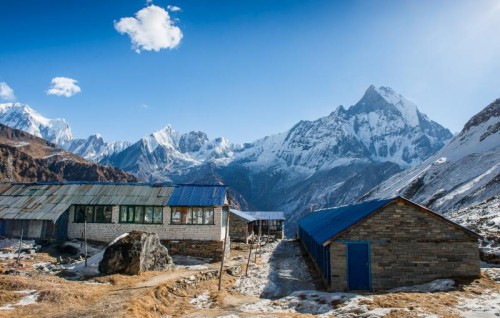


 USD 770
USD 770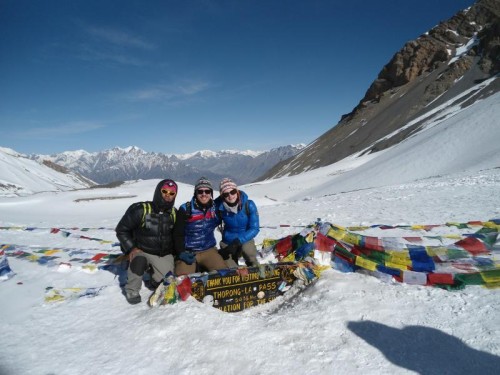
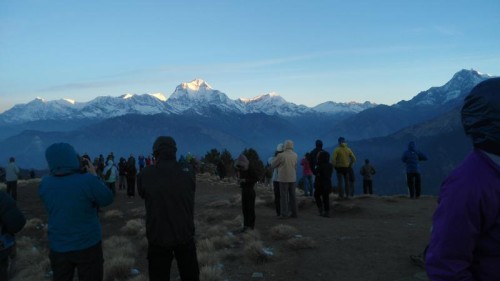
.jpg)
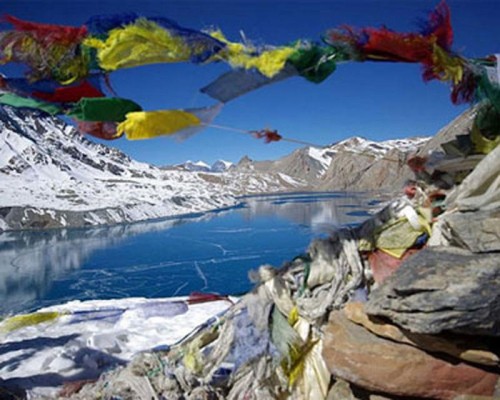
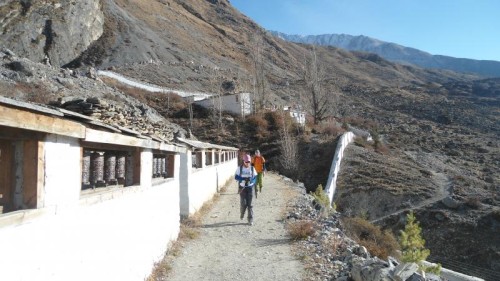
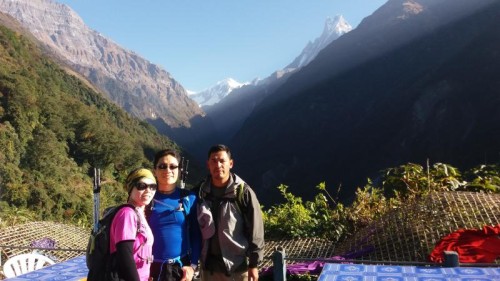
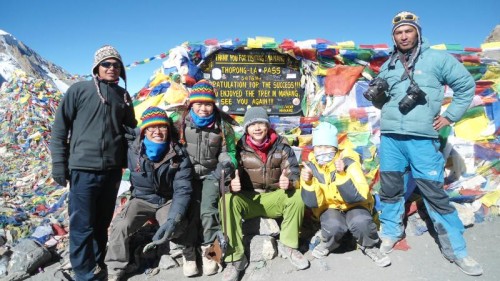
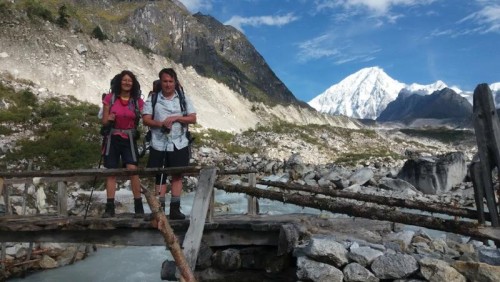
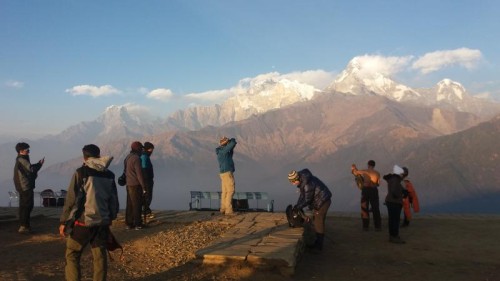
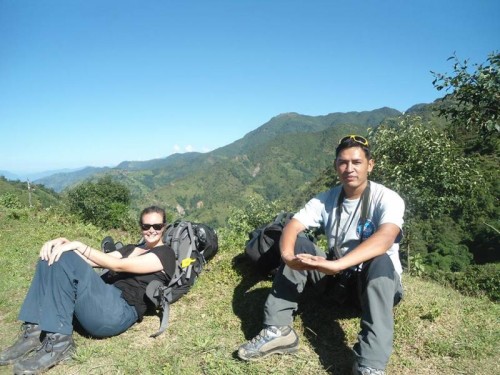
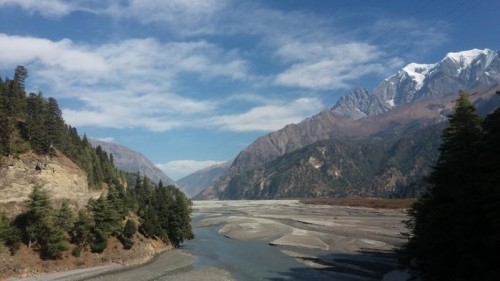
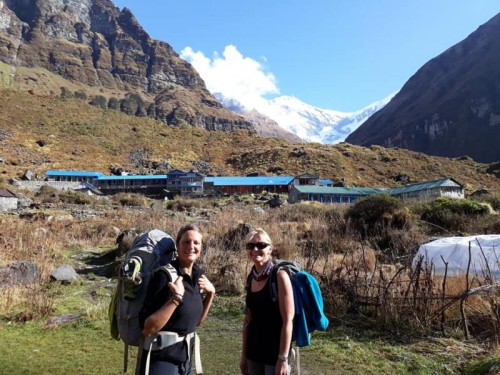
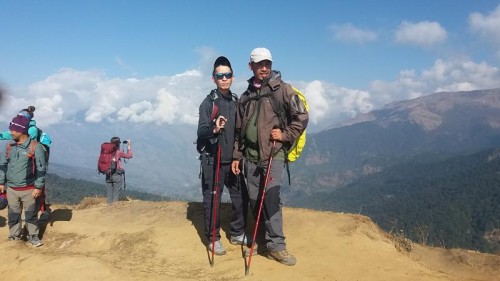
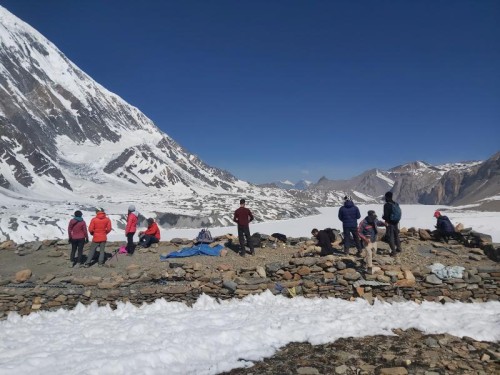

Nicole Pothier and friend
United States
Amazing time with High Pass Adventure
18th June, 2023
We had amazing trekking experience in Mardi Himal Trek. We can warmly recommend the trip arranged by High Pass Adventure working team. We enjoyed the best service from our excellent guide Tika and our porter Rupesh, who were always concerned with our needs and wishes.